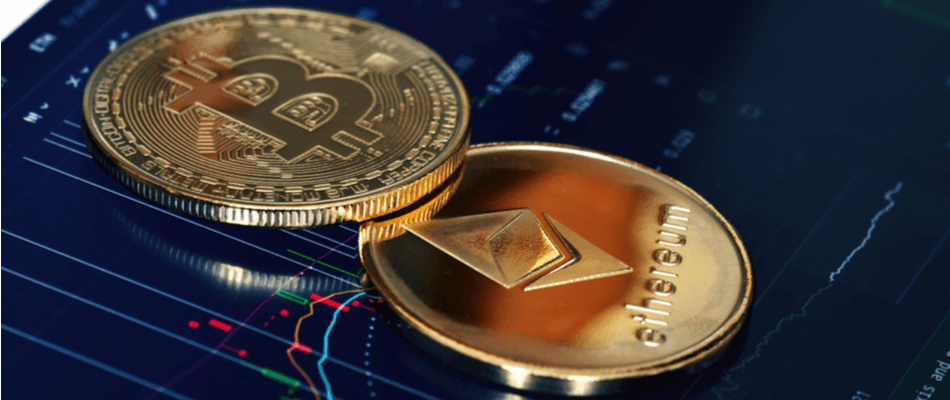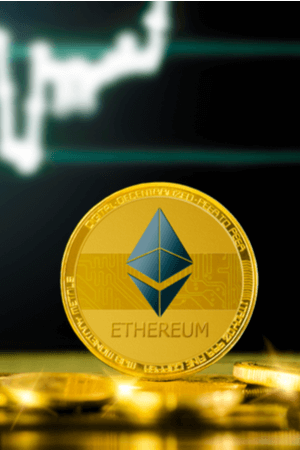What is Ethereum?
Ethereum is a cryptocurrency that, like Bitcoin, functions on the basis of blockchain technology. Ethereum and Bitcoin are logically quite similar in many ways. However, there are also enough differences to mention. You can read more about Ethereum as such and the similarities and differences with Bitcoin below.
Target Ethereum
Ethereum essentially has a different goal than Bitcoin. This interesting crypto is trying to build a completely new kind of internet. The Ethereum network is intended as the foundation for so-called decentralized applications (DAPPs) and smart contracts. DAPPs offer a lot more security than current internet applications. This has everything to do with decentralization. In order to develop DAPPs and smart contracts, Ethereum has managed to develop its own programming language. This goes by the name Solidity.
Bitcoin, on the other hand, focuses more on making transactions. In other words, Bitcoin is more about transferring some value – in a secure and decentralized way. Ethereum is about creating new internet applications for the future.
DAPPs and Smart Contracts: The Differences
DAPPs and smart contracts are basically very similar. However, there are differences. For example, a smart contract requires a fixed number of parties to be able to establish a valid agreement. This is different with DAPPs. An unlimited number of participants can join. Another difference is in the financial application. Smart contracts are limited to financial applications, but DAPPs are not.
The difference between Ether and Ethereum
Many people use the terms Ether and Ethereum interchangeably. However, there is a difference in the meaning of both terms. It is like this. Ethereum refers to the network as a whole. It does not really say anything about a payment unit or a currency. The currency that belongs to the Ethereum network is Ether. So you never buy Ethereum, but you buy Ether. It should be said that most people will of course know what you mean. In that sense, the terms cause few problems in practice.

How Ethereum Works
The operation of Ethereum can be compared to that of Bitcoin. Both are based on a so-called open source blockchain. Open source means that the source code is public and that everyone can check it. Within the network itself, all links keep a copy of the digital book in which all transactions are recorded. In addition, the blockchain is completely open, so everyone can use it to launch their own applications. In another article you can read about other types of cryptocurrency.
The Applications of Ether
The digital currency Ether can be used as a means for various things. These will be discussed briefly below.
Pay
Ether can be used as a means of payment. This is because they represent a certain value. More and more (online) shops are starting to allow payments in cryptocurrencies. However, paying with crypto is still in its infancy. You can’t pay with it everywhere yet.
Transactions
This ties in with the aspect of payment. You can send Ether all over the world very quickly, without third parties involved. If you wanted to transfer euros to the other side of the world, this would cause many more problems. For example, it usually takes quite a long time and you are confronted with annoying (transaction) costs and possibly exchange rates.
Invest
Most people who own cryptocurrencies do not use them to pay. In most cases, buying Ether will only be an investment for the future. There is a chance that the price will still rise considerably in the future. Then it is nice that you have already invested. However, Ether, like many other cryptos, is still very volatile. The price goes in all directions in any given week – or day. So make wise decisions when considering including Ether in your investment portfolio.

ICO’s
If you have never heard of ‘ICO’, this term is meaningless. A short explanation is therefore in order. ICO stands for Initial Coin Offering. It is a way of raising seed capital to finance a new project. You can use Ether to invest in an ICO. However, do this wisely. Not all projects are successful. You can easily lose your entire investment.
But what do you get in return if everything goes well? Then you get a new token from the project you invested in. You are then one of the first to have it in your possession.
Why invest in Ethereum?
Ethereum could be seen as a kind of programmable Bitcoin. Ethereum and Bitcoin have many similarities, except in the area of programmability. Ethereum can potentially support a lot more applications than Bitcoin. Especially the DAPPs and the smart contracts seem to offer relevant frameworks for future developments. An investment in Ether is therefore certainly worth considering.
How to trade Ethereum?
Are you planning to buy Ether? Then you can put this into practice in two ways. Firstly, it is possible to buy real Ether coins on an exchange . At such an exchange you can buy and sell Ether coins. You then really trade within the Ethereum network. Buying and selling Ether at an exchange is recommended for someone who is looking for a long-term investment.
Using the widget below you can buy Ethereum at Bitvavo, one of the largest crypto exchanges in the Netherlands. Using this widget you can view the current rate and expected costs. Suitable for an investment in Ethereum!
If you are looking for Ether as a short-term investment product, you might want to look into cryptocurrency CFDs . These are derivatives that offer many possibilities, such as opening a short position (speculating on a price drop) and using leverage. Such advantages make CFDs a nice investment product for people who like to trade in the short term. Before you can buy CFDs, you need to have an account with a broker.
It is wise not to just create an account with a broker: compare crypto brokers well. It would be a shame to pay too many unnecessary (transaction) costs. Such costs often nibble away large parts of your return if they do not fit your strategy. Comparing pays off!